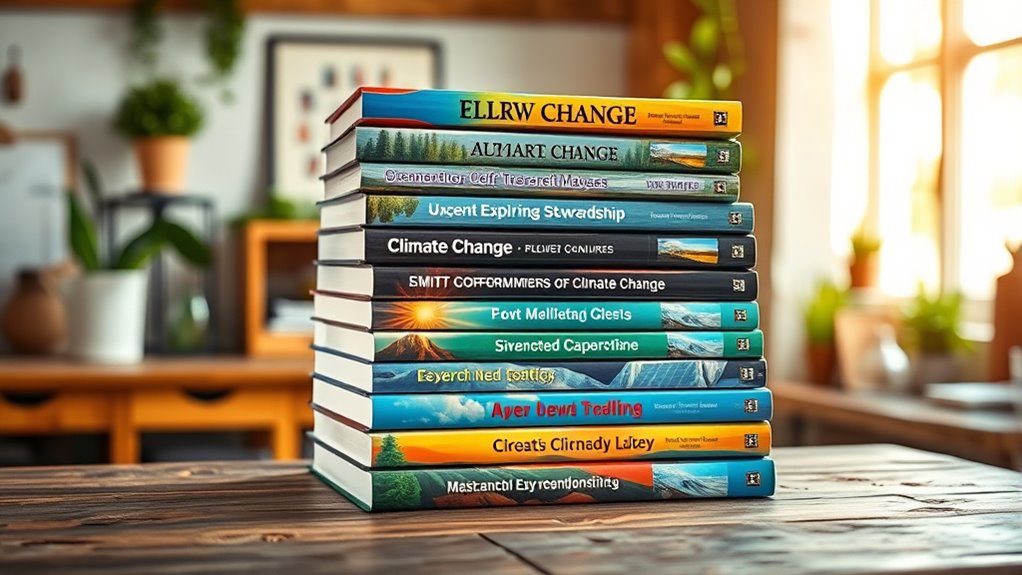If you’re looking for the best climate change books of 2025 recommended by experts, you’ll find a diverse selection that covers science, personal stories, and solutions. Titles like *Into the Thaw* and *Rising Seas* offer vivid, accurate insights into our changing world, while others like *Burn* and *The Wolverine Way* explore ecological action and wildlife. There’s also compelling fiction like *Trashlands*. Keep exploring these titles to discover inspiring ideas and crucial facts about our planet’s future.
Key Takeaways
- Highlight books that combine scientific accuracy with engaging storytelling, ensuring they are both informative and compelling for general readers.
- Prioritize titles featuring vivid visuals, infographics, or detailed descriptions to clarify complex climate concepts effectively.
- Select books covering diverse topics—from ecological impacts and conservation to climate solutions and emotional resilience—to appeal to varied interests.
- Focus on works recommended by experts that balance practical action, awareness, and systemic understanding of climate issues.
- Include recent publications from 2025 that offer fresh insights, innovative approaches, or new research in the climate change genre.
Into the Thaw: Witnessing Wonder Amid the Arctic Climate Crisis
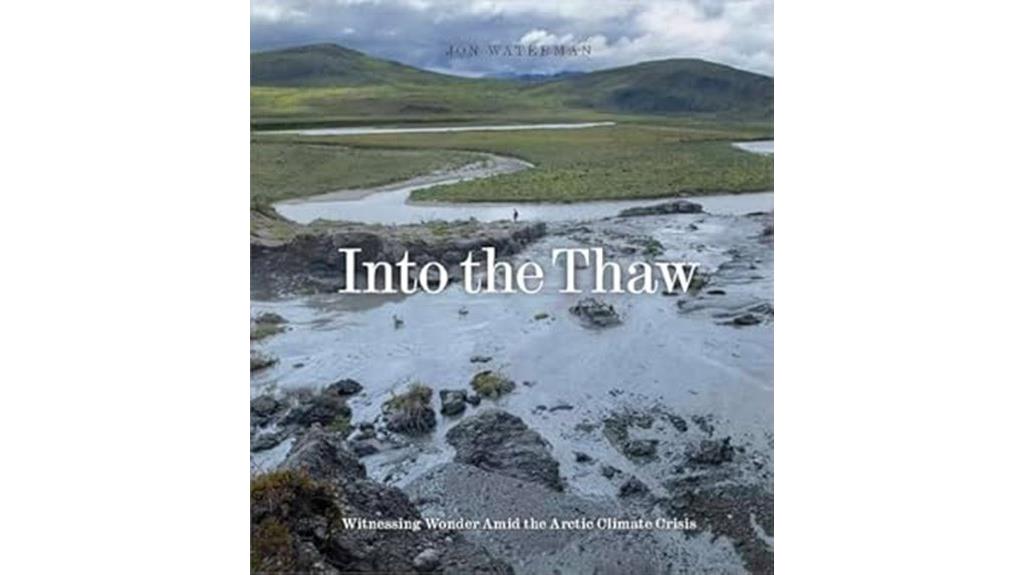
If you’re fascinated by firsthand accounts of how climate change is transforming our planet, *Into the Thaw* should be at the top of your list. I’ve personally found Waterman’s vivid storytelling and detailed observations eye-opening. He takes you deep into the Arctic’s stunning yet fragile wilderness, revealing how melting ice, shrinking habitats, and shifting animal populations illustrate the urgent reality of climate change. His insights into native communities’ resilience deepen the impact, making it clear that this isn’t just a distant problem but one affecting real people and ecosystems. The book’s compelling mix of adventure, science, and personal reflection makes it a must-read.
Best For: readers interested in firsthand environmental accounts, climate change awareness, and Arctic exploration.
Pros:
- Vivid storytelling that immerses readers in the Arctic landscape
- Detailed observations that effectively illustrate climate change impacts
- Celebrates indigenous resilience and cultural heritage
Cons:
- May be too detailed or technical for casual readers seeking light reading
- Focuses primarily on the Arctic, limiting broader global climate context
- Some readers might find the personal reflection style less structured than traditional scientific texts
Rising Seas: Flooding, Climate Change and Our New World
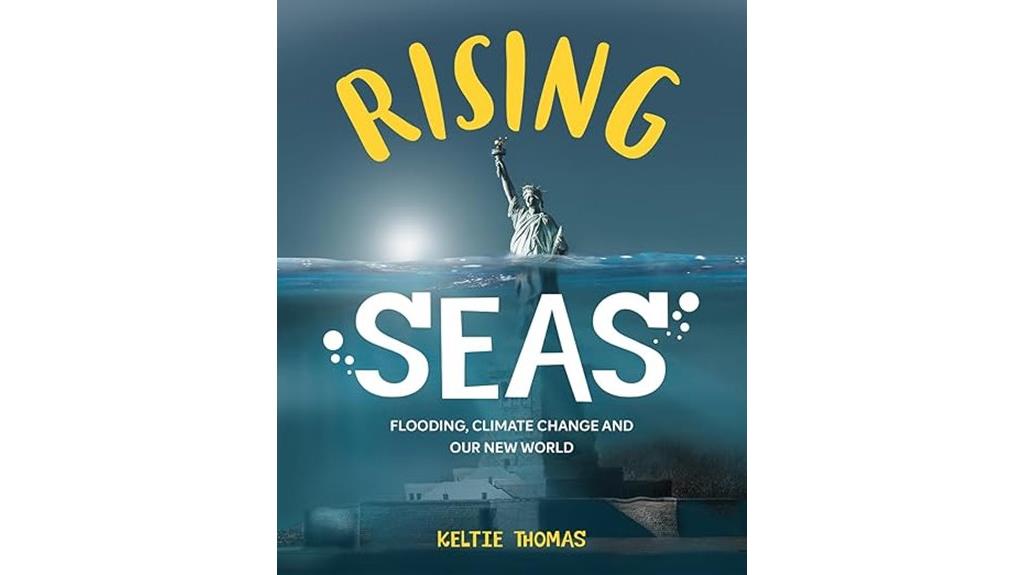
Rising Seas: Flooding, Climate Change, and Our New World stands out as an ideal choice for young readers and beginners enthusiastic to understand how climate change affects sea levels. This accessible book uses engaging graphics and straightforward explanations to clarify complex issues like rising seas and flooding. It provides clear insights into how climate change impacts our coastlines and communities, making it perfect for those new to the topic. I recommend it as an educational resource that raises awareness and encourages action. Its simple yet all-encompassing approach helps readers grasp the urgency of preparing for a world increasingly affected by rising waters.
Best For: young readers and beginners interested in understanding the impacts of climate change on sea levels and flooding.
Pros:
- Uses engaging graphics and clear explanations suitable for young audiences.
- Effectively simplifies complex climate change concepts for easy comprehension.
- Serves as a valuable educational resource to raise awareness and promote action.
Cons:
- May lack in-depth scientific detail for advanced readers or experts.
- Focuses primarily on raising awareness rather than providing detailed solutions.
- Designed mainly for educational purposes, less suitable for academic or technical study.
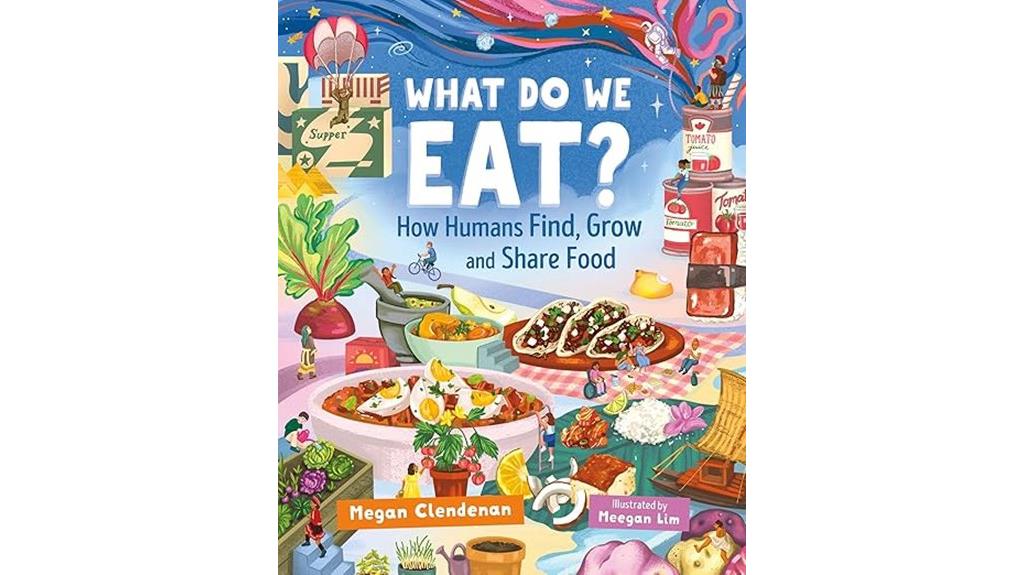
This book stands out as an excellent choice for young readers curious about the journey of food across history and cultures. It offers a vibrant look at how humans find, grow, and share food, from ancient civilizations to space missions. The stories highlight innovations like freeze-dried meals and sustainable farming, emphasizing resilience amid challenges like climate change. With engaging photos and relatable examples, the book explores food diversity, cultural traditions, and the importance of teamwork. It encourages critical thinking about future food security, inspiring kids to understand how science and tradition shape what we eat and how we share it worldwide.
Best For: young readers, educators, and families interested in learning about food history, science, and cultural diversity in an engaging and accessible way.
Pros:
- Colorful photos and illustrations make complex topics engaging and easy to understand
- Highlights global food diversity and cultural traditions, promoting inclusivity
- Encourages critical thinking about future food security and sustainable solutions
Cons:
- Might be too detailed for very young children with limited reading skills
- Some topics, like advanced scientific concepts, may require adult explanation for full comprehension
- Limited focus on contemporary food issues compared to historical and cultural aspects
Burn: Igniting a New Carbon Drawdown Economy to End the Climate Crisis
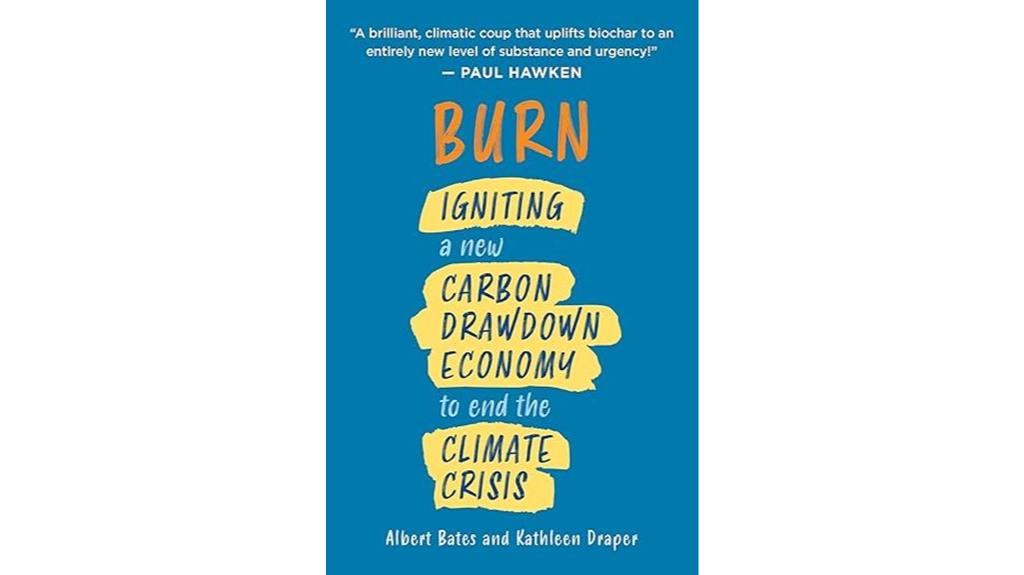
Burn: Igniting a New Carbon Drawdown Economy to End the Climate Crisis is an essential read for environmentalists, policymakers, and anyone enthusiastic to explore innovative climate solutions. This book spotlights biochar as a powerful tool for removing atmospheric carbon and reducing greenhouse gases like methane. I was impressed by how biochar, made from organic waste, can improve soil health, support regenerative agriculture, and create versatile materials for construction and manufacturing. Albert Bates offers detailed insights into how scaling biochar can sequester enough carbon to help cool the planet. It’s a hopeful, practical guide that shows humanity’s potential to turn waste into climate-positive solutions.
Best For: environmentalists, policymakers, educators, and sustainability advocates seeking practical solutions to combat climate change through innovative biochar technologies.
Pros:
- Provides comprehensive insights into biochar’s environmental and agricultural benefits.
- Demonstrates scalable, cost-effective methods for carbon sequestration and pollution mitigation.
- Encourages educational and policy integration to foster widespread adoption and awareness.
Cons:
- Requires initial investment and infrastructure development for widespread implementation.
- Potential variability in biochar quality depending on feedstock and production methods.
- May face regulatory hurdles or lack of awareness in some regions hindering adoption.
The Wolverine Way
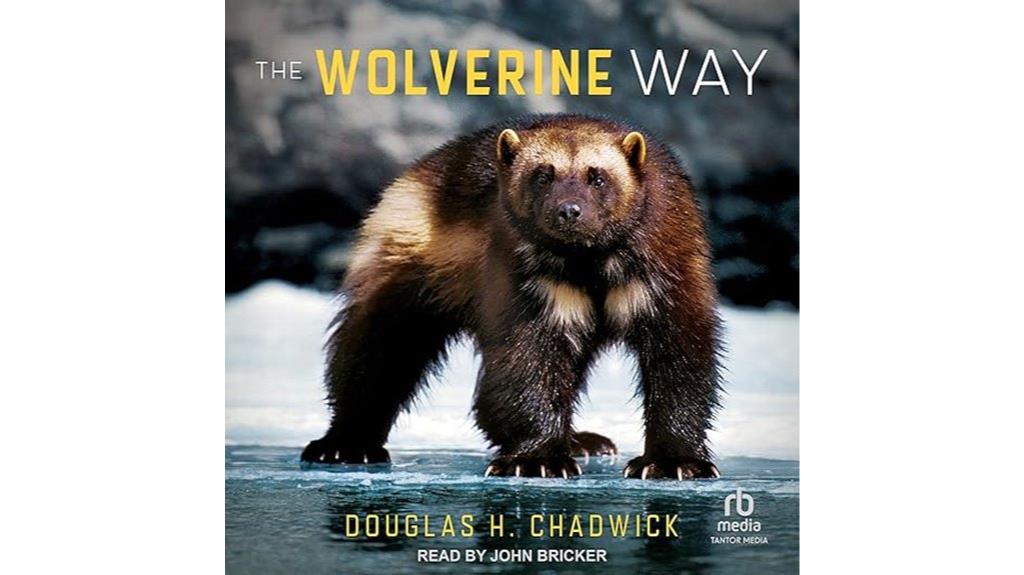
If you’re captivated by stories that blend scientific insight with compelling storytelling, *The Wolverine Way* by Douglas Chadwick is a top choice. I found it fascinating how Chadwick combines vivid descriptions with detailed research, making the elusive wolverine come alive. The book highlights their resilience, strength, and the dedicated efforts of researchers working to understand and protect these misunderstood creatures. It also emphasizes habitat preservation and the challenges of tracking such elusive animals. I appreciated how the narrative encourages respect for wildlife, inspiring admiration for their toughness and the human efforts to conserve them amid environmental threats. It’s a powerful reminder of nature’s resilience and the importance of conservation.
Best For: wildlife enthusiasts, nature lovers, and anyone interested in learning about elusive and resilient animals like the wolverine through engaging storytelling and scientific insights.
Pros:
- Combines vivid descriptions with thorough scientific research, making complex topics accessible and engaging.
- Highlights conservation efforts and the resilience of wildlife, inspiring respect and admiration.
- Features compelling storytelling that appeals to a wide audience, from casual readers to wildlife enthusiasts.
Cons:
- Lacks a cohesive narrative structure, jumping between different stories and research without a unifying storyline.
- Some readers desire more color photographs to enhance visual engagement.
- The detailed focus on scientific techniques may be dense for casual readers seeking lighter content.
Cool Flowers Book: Growing Long-Blooming Hardy Annual Flowers in Cool Weather
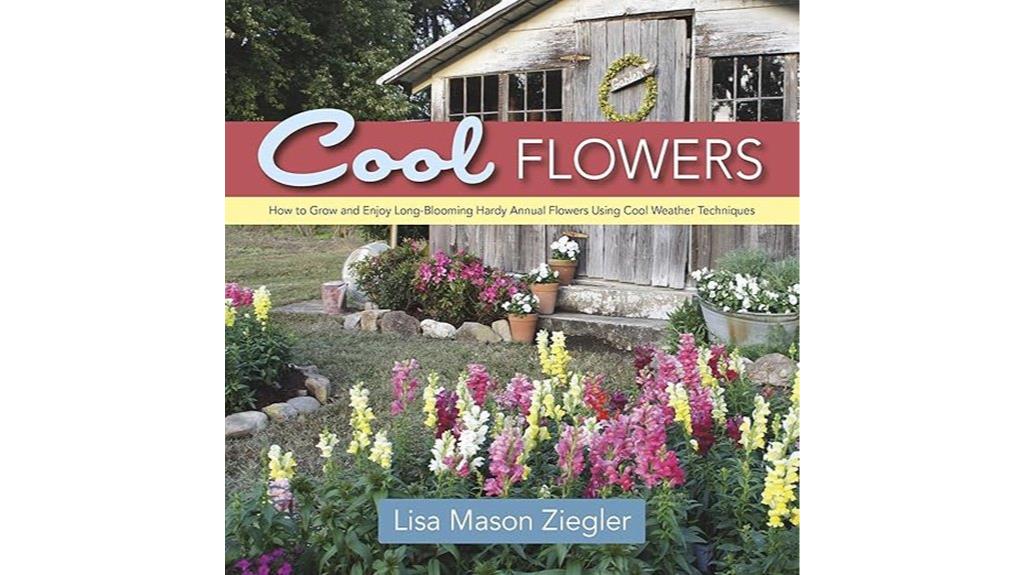
For gardeners and flower farmers enthusiastic to extend their blooming season in cooler climates, “Cool Flowers” by Lisa Ziegler stands out as an essential resource. This concise guide offers practical tips for germinating, planting, overwintering, and harvesting hardy annuals, specifically tailored for USDA zones 5 to 7 and beyond. It emphasizes techniques like fall planting, winter sowing, and simple cold protection methods that help achieve earlier blooms and longer-lasting flowers. Ziegler’s straightforward approach, combined with a free video course, makes it accessible for both hobbyists and professionals seeking organic, chemical-free methods. It’s a practical, easy-to-use reference that helps extend seasons and improve flower production efficiently.
Best For: gardeners and flower farmers in cooler climates (USDA zones 5-7 and beyond) seeking practical, organic techniques to extend blooming seasons and improve flower production.
Pros:
- Concise, easy-to-understand guide packed with essential tips for germination, planting, overwintering, and harvesting
- Emphasizes simple, space-efficient methods suitable for small plots and large farms without the need for a greenhouse
- Offers tailored advice for a variety of hardy annuals and adaptable techniques across multiple zones
Cons:
- Focuses primarily on cool-weather flowers, with limited coverage of warm-season or tropical plants
- Some users may find the level of technical detail insufficient for advanced or large-scale commercial operations
- The book’s concise format may lack in-depth botanical or pest management information for more complex gardening needs
The Dance of Anger: A Woman’s Guide to Changing Relationship Patterns
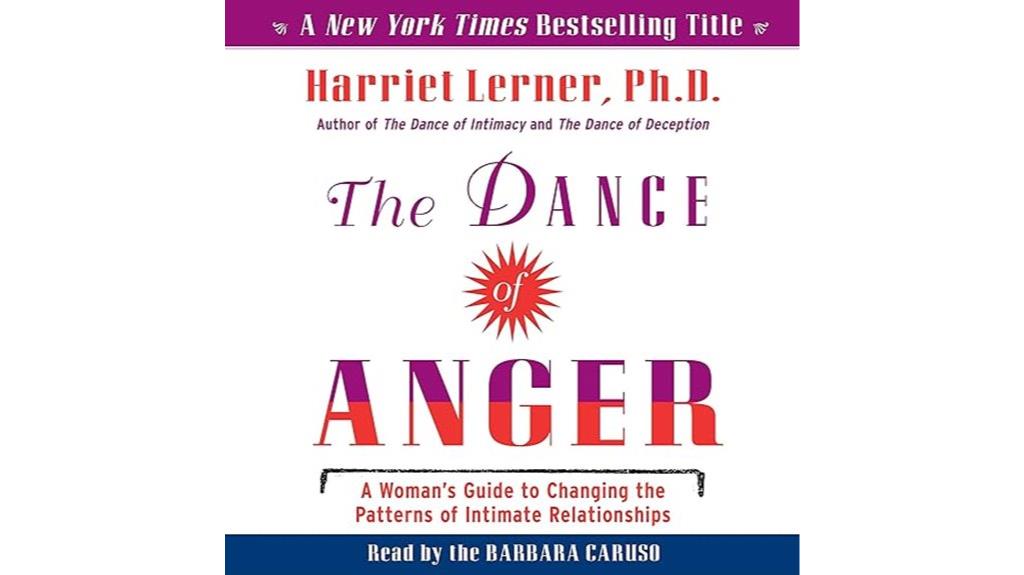
The Dance of Anger: A Woman’s Guide to Changing Relationship Patterns stands out as a must-read for women seeking to understand and transform their emotional responses in relationships. Harriet Lerner’s book highlights anger as a essential signal for growth and self-respect, challenging the idea that anger is inherently destructive. It offers practical advice, relatable examples, and compassionate guidance to help women recognize unhealthy patterns, set boundaries, and communicate effectively. Many readers find it empowering, helping them gain clarity, confidence, and emotional awareness. Overall, it’s a powerful resource for transforming anger into positive change and healthier relationships.
Best For: women seeking to understand and transform their emotional responses, set healthy boundaries, and improve their relationships through recognizing anger as a tool for growth.
Pros:
- Empowers women to view anger as a constructive signal rather than a destructive emotion
- Offers practical strategies and compassionate guidance for effective communication and boundary-setting
- Facilitates personal growth, self-awareness, and healthier relationship patterns
Cons:
- Some readers find sections repetitive and overly conceptual without step-by-step instructions
- The gendered language may feel outdated or limiting for some audiences
- The book’s price has been criticized as high, which could be a barrier for some readers
Endless Forms: The Secret World of Wasps

Endless Forms: The Secret World of Wasps stands out as an ideal read for natural history enthusiasts keen to deepen their understanding of insects’ ecological roles. I was surprised by how the book transformed my view of wasps, revealing their complex behaviors and essential contributions to ecosystems. Sumner’s poetic prose and vivid insights make science engaging, even if some sections feel padded. The detailed explanations of social structures and evolution highlight wasps’ importance, challenging common misconceptions. While technical at times, it’s a valuable resource for curious readers eager to explore hymenopteran marvels. This book truly deepened my appreciation for these fascinating, often misunderstood insects.
Best For: natural history enthusiasts, ecologists, and curious readers eager to explore the complex behaviors and ecological significance of wasps.
Pros:
- Engaging poetic prose and vivid insights that make scientific concepts accessible and inspiring
- Extensive, well-informed scientific content about wasp social structures, behaviors, and evolution
- Challenges misconceptions, highlighting wasps’ ecological importance alongside bees and ants
Cons:
- Lengthy with some sections feeling padded, especially for readers seeking a concise overview
- Lack of illustrations or diagrams makes complex morphological terms harder to understand for beginners
- Technical language may be difficult for novices without prior biological background
Into the Raging Sea Book about the El Faro Sinking

If you’re interested in understanding how human errors and systemic failures can lead to tragedy at sea, Rachel Slade’s *Into the Raging Sea* offers a gripping and detailed account of the El Faro sinking. The book reveals how outdated weather reports, poor decision-making, and negligent maintenance contributed to the disaster that claimed 33 lives. Slade digs into crew dynamics, leadership failures, and corporate greed, exposing systemic flaws in maritime safety. Her thorough research highlights how a combination of hubris, complacency, and regulatory shortcomings can turn a routine voyage into a devastating tragedy. It’s a powerful reminder of the importance of vigilance and accountability at sea.
Best For: readers interested in maritime safety, human error, and systemic industry failures who want a detailed account of the El Faro sinking.
Pros:
- Thorough and engaging storytelling that humanizes the tragedy
- In-depth analysis of systemic failures and industry oversight
- Highlights important lessons on safety, leadership, and accountability
Cons:
- Can be emotionally intense and distressing to some readers
- Dense technical details may be challenging for casual readers
- Focuses heavily on systemic issues, which might overshadow personal stories
Trashlands: A Novel
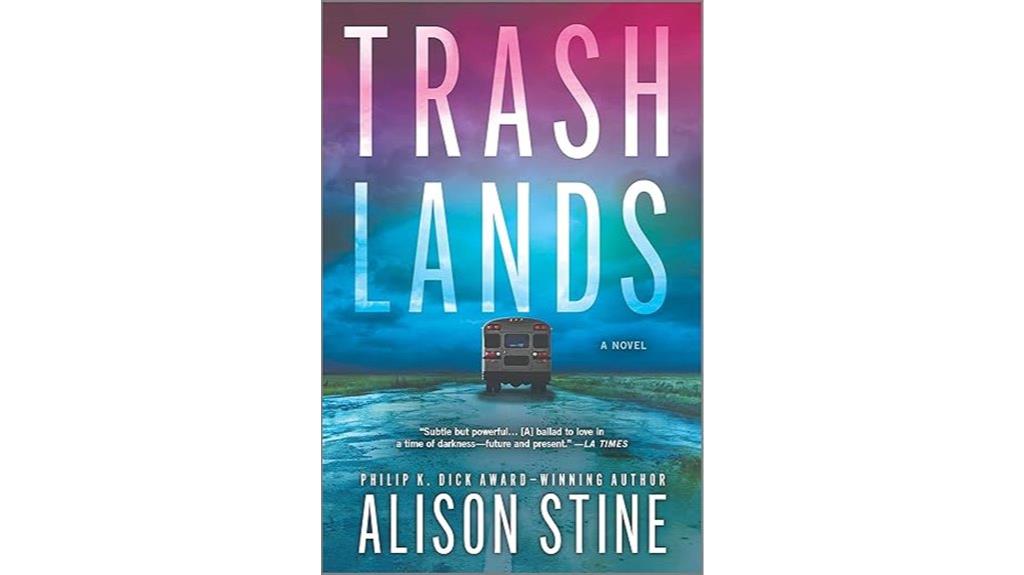
Anyone looking for a thought-provoking depiction of climate change’s long-term effects will find “Trashlands” a compelling choice. Alison Stine’s novel paints a bleak future where rising seas have flooded the Earth, reshaping coastlines and turning society into a survivalist, resource-scarce world. Plastic dominates every aspect of life—used as currency, building material, and survival resource. The story follows characters like Coral and Miami, highlighting resilience amid chaos. Stine’s detailed world-building shows how environmental neglect and greed have led to this dystopia. Despite the despair, the novel emphasizes the enduring human spirit—through art, love, and hope—making it a powerful reflection on climate change’s ongoing impact.
Best For: readers who appreciate detailed world-building, character-driven stories, and thought-provoking themes related to climate change and societal resilience.
Pros:
- Immersive depiction of a post-apocalyptic world shaped by environmental neglect and plastic pollution.
- Focus on human passions such as art, love, and resilience, providing an optimistic outlook amid bleak circumstances.
- Multiple POVs create a layered, nuanced narrative that explores diverse perspectives and experiences.
Cons:
- The ending leaves some questions unanswered, which may feel unsatisfying for readers seeking closure.
- The slow-paced storytelling might not appeal to those preferring fast-paced action or plot development.
- Heavy themes of societal regression and environmental degradation could be overwhelming or depressing for sensitive readers.
Factors to Consider When Choosing Climate Change Books 2025

When choosing climate change books in 2025, I focus on whether the content suits my level of understanding and interests. I also check for scientific accuracy to make sure I’m getting reliable information and look for engaging visuals that help clarify complex topics. Finally, I want books that offer actionable insights I can apply to make a difference.
Audience Appropriateness
Choosing the right climate change book depends heavily on matching its language and complexity to the reader’s age and understanding. It’s essential to contemplate whether the book uses visuals, illustrations, or examples that resonate with the intended audience, making complex topics more relatable. Ensuring the content aligns with their existing knowledge prevents overwhelming or under-informing them. I also look for titles that include stories or scenarios relevant to their cultural context, making the material more engaging. Balancing scientific accuracy with accessible language is key, as it helps foster both awareness and comprehension. When selecting a book, I ask myself if it’s suitable for the reader’s developmental level and background, ensuring they stay interested and gain meaningful understanding of climate issues.
Scientific Accuracy
Ensuring a climate change book is scientifically accurate is essential for providing trustworthy information. I look for books that cite recent, peer-reviewed research to guarantee the facts are current and reliable. It’s also important that the author has relevant credentials or expertise in climate science, ecology, or related fields, which adds credibility. I check for verifiable data, statistics, and references that support key claims about climate impacts and solutions. I avoid books with sensationalized language, unsubstantiated claims, or conspiracy theories, as these undermine scientific integrity. Additionally, the best books explain complex scientific concepts clearly and accurately, avoiding oversimplification or misrepresentation of data. This careful scrutiny helps me recommend books that are both informative and trustworthy.
Visual Engagements
Visual engagements like photographs, charts, and infographics play a crucial role in making complex climate science more understandable. They help illustrate topics like sea level rise and melting permafrost, turning abstract ideas into clear visuals. Well-designed graphics make scientific data more accessible, especially for visual learners, and can turn dense information into memorable images. These visual aids also clarify concepts like carbon sequestration and ecological impacts, making them easier to grasp. Additionally, images and diagrams evoke emotional responses, helping readers connect personally with climate issues. Incorporating visual elements not only enhances understanding but also boosts retention of information. Ultimately, compelling visuals can inspire action by creating a more engaging and impactful reading experience.
Narrative Style
Have you ever noticed how the storytelling approach in a climate change book can make complex topics feel more personal and compelling? The narrative style shapes how we connect with the material—whether through poetic metaphors or straightforward science. Personal anecdotes or character-driven plots can evoke emotion and help us relate to ecological challenges. Vivid descriptions and immersive language turn abstract ideas, like melting ice or rising seas, into tangible images that hit home. A well-crafted narrative balances scientific accuracy with engaging prose, making information easier to understand and remember. The tone set by the style—hopeful, urgent, or reflective—also influences our emotional response, motivating us to care and act. Choosing the right narrative approach can transform dry facts into a powerful, relatable story.
Actionable Insights
When choosing climate change books in 2025, it’s important to focus on those that offer clear, practical actions you can incorporate into your daily life. Look for titles that present evidence-based strategies, like adopting renewable energy or supporting sustainable practices, that can make a real difference. Choose books that translate complex scientific data into accessible steps, empowering you to implement environmental actions easily. Prioritize works highlighting local or community initiatives, so you can connect global issues with actionable local efforts. Additionally, seek books that encourage critical thinking about systemic change, policy advocacy, and technological innovations. These insights help you become an informed, proactive participant in combating climate change, ensuring your reading leads to meaningful, tangible change in your life and community.
Frequently Asked Questions
Which Books Are Most Suitable for Young Readers Interested in Climate Change?
If you’re looking for books suitable for young readers interested in climate change, I recommend titles like “The Climate Action Book for Kids” and “Our Planet: A Youth Guide to Climate Change.” These books use engaging stories and simple language to explain complex issues, inspiring curiosity and action. I find them perfect for sparking young minds‘ interest and encouraging them to become climate advocates in a fun, accessible way.
How Do These Books Address Climate Justice and Marginalized Communities?
When it comes to climate justice, these books don’t beat around the bush. They highlight the struggles marginalized communities face and emphasize their essential role in solutions. I find they shed light on stories often overlooked, making complex issues relatable. These books serve as a wake-up call, showing that fighting climate change requires us to stand with those most affected and guarantee their voices are heard loud and clear.
Are There Any Recommended Books Focusing on Climate Solutions and Innovations?
Absolutely, I recommend exploring books that highlight innovative climate solutions. They cover topics like renewable energy, sustainable technology, and community-led initiatives. I find these books inspiring because they showcase real-world solutions and how communities are tackling climate challenges head-on. These reads motivate me to stay optimistic and proactive, understanding that with innovation and collective effort, we can create a more sustainable future.
Which Books Explore the Psychological Impacts of Climate Change?
Did you know that over 60% of people report feeling anxious or overwhelmed about climate change? I’ve found several books that explore this emotional toll. One that really resonated with me is “The Climate Psychology” by Susan Clayton. It explores how climate anxiety affects mental health and offers ways to cope. If you’re feeling overwhelmed, these stories might help you understand and manage your feelings better.
How Do These Books Incorporate Recent Scientific Discoveries Beyond 2025?
These books incorporate recent scientific discoveries by weaving in the latest research on climate impacts, adaptation strategies, and technological advancements. I find they often include up-to-date data, emerging trends, and expert insights, making the content highly relevant. They stay current by referencing new studies, modeling projections, and policy developments, which helps me understand how science continues to evolve and shape our response to climate change beyond 2025.
Conclusion
As I turn the pages of these books, I see both the icy silence of the Arctic and the roaring chaos of rising seas. Each story paints a different face of our climate, from fragile wasps to sinking ships. These books remind me that amid the storms and melting ice, hope and action can still bloom. Let’s choose to listen, learn, and act—before the world becomes a story we can no longer turn back from.
